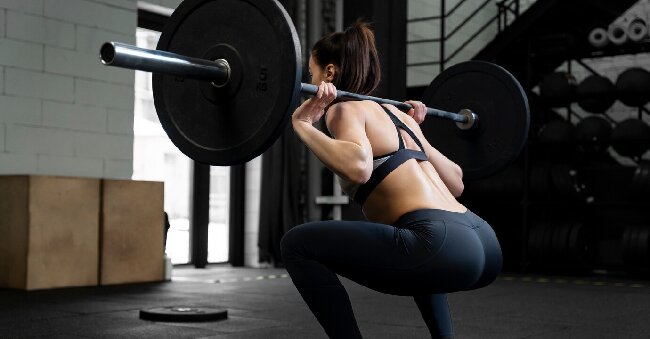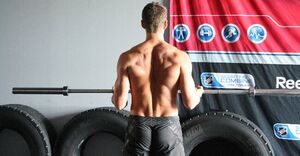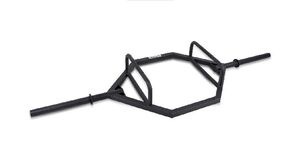
Mastering Smith Machine Squats: Techniques and Directions for Beginners
Are you looking to master the art of Smith Machine Squats? In this article, we will explore what Smith Machine Squats are, how to perform them with proper techniques for beginners, and the benefits they offer.
We will also discuss common mistakes to avoid, how to progress in your workouts, and safety precautions to keep in mind. Whether you are new to the gym or a seasoned lifter, this guide will help you perfect your Smith Machine Squats routine.
What Are Smith Machine Squats?
Smith Machine Squats are a fundamental exercise commonly performed in the gym as part of strength training routines.
- They involve utilizing a Smith Machine, which is a weight-bearing piece of equipment that aids in stability during the squat movement.
- Performing squats on the Smith Machine allows individuals to target various muscle groups such as the quadriceps, hamstrings, glutes, and calves.
- This compound exercise not only helps in building lower body strength but also improves overall balance and stability.
- Incorporating Smith Machine Squats into a fitness regimen is beneficial for enhancing functional strength, promoting muscle growth, and improving athletic performance.
How To Perform Smith Machine Squats?
- To begin, set up the Smith Machine bar at an appropriate height, ensuring it is level.
- Stand with your feet shoulder-width apart under the bar and position it across the back of your shoulders.
- Engage your core, keep your chest up, and lower your body by bending your knees.
- Maintain a neutral head position by looking straight ahead.
- Descend until your thighs are parallel to the ground, ensuring your knees do not extend past your toes.
- Press through your heels to return to the starting position, focusing on driving your hips forward.
What Are The Proper Techniques For Beginners?
For beginners, mastering the proper techniques of Smith Machine Squats is crucial to prevent injury and build a strong foundation for future progress.
One key technique to focus on is maintaining a neutral spine throughout the movement. This involves keeping your chest up, shoulders back, and core engaged to protect your lower back. Ensure your feet are positioned shoulder-width apart and your knees track in line with your toes as you lower into the squat.
Safety is paramount, so always start with a light weight to master the form before adding more resistance. Avoid leaning too far forward or letting your knees collapse inward. Gradually increase the weight as you gain strength and confidence in your squatting technique.
What Are The Benefits Of Smith Machine Squats?
Smith Machine Squats offer a myriad of benefits that contribute to overall muscle development and enhanced leg strength.
They target major muscle groups such as quadriceps, hamstrings, and glutes, providing a comprehensive lower body workout. By engaging these muscles, Smith Machine Squats not only improve strength but also enhance muscle endurance and flexibility. The controlled movement and stability provided by the machine help individuals maintain proper form, leading to improved core stability. This exercise is a versatile addition to any fitness routine, offering a full-body workout that can increase overall strength and physical performance.
Targets Specific Muscles
Smith Machine Squats target a variety of muscles, including the quadriceps, hamstrings, glutes, and core, promoting overall strength, balance, and stability.
Engaging these muscle groups not only helps in developing lower body strength but also plays a crucial role in enhancing core stability and balance.
The quadriceps, situated at the front of the thighs, are responsible for knee extension, while the hamstrings, located at the back of the thighs, aid in knee flexion and hip extension.
The glutes, one of the body’s largest muscle groups, support hip extension and play a pivotal role in overall lower body power.
Meanwhile, the core muscles are vital for maintaining proper posture and spinal alignment during the squatting motion, leading to functional strength gains.
Provides Stability
One of the key benefits of Smith Machine Squats is the stability they offer, especially for individuals who may need additional support for their lower back and core.
Using a Smith Machine for squats helps maintain proper alignment by guiding the barbell along a fixed vertical track, reducing the risk of forward or backward tipping. This controlled movement not only supports the lower back but also encourages core engagement throughout the exercise. By emphasizing correct posture and alignment, individuals can effectively target their leg muscles while minimizing strain on the spine. It’s crucial to focus on form, such as keeping the chest up and knees in line with the toes, to enhance stability and prevent potential injuries during Smith Machine Squats.
Offers Versatility
Smith Machine Squats offer versatility through various exercise variations and progression options, allowing individuals to tailor their workouts to specific fitness goals.
- One effective variation of Smith Machine Squats is incorporating pauses at different points in the movement to increase time under tension and build strength.
- Another strategy is to focus on unilateral movements by performing single-leg Smith Machine Squats to improve balance and target each leg individually.
- Adjusting foot placement and stance width can shift the emphasis to different muscle groups, such as placing the feet closer together to engage the quads more.
These progressive strategies help in continually challenging the body and promoting muscle growth and overall fitness.
What Are The Common Mistakes Of Smith Machine Squats?
Avoiding common mistakes during Smith Machine Squats is essential to prevent injuries and maximize the effectiveness of the exercise.
One frequent error individuals make when performing Smith Machine Squats is improper foot placement. Placing the feet too far forward or too far back can lead to instability and reduce the effectiveness of the exercise.
To address this mistake, ensure that your feet are shoulder-width apart and positioned directly under the bar. Maintaining a neutral spine throughout the movement is crucial. Arching or rounding the back excessively can strain the lower back. Focus on keeping your chest up and core engaged to maintain proper alignment.
Not Using Proper Form
One of the most common mistakes in Smith Machine Squats is not using proper form, which can impact squatting technique and lifting mechanics.
Improper form during Smith Machine Squats can lead to a range of issues, such as placing excessive strain on the lower back, knees, and hips. This can not only hinder the effectiveness of the exercise but also increase the risk of injury.
To correct form errors, focus on maintaining a straight back, engaging the core, and ensuring that the knees do not extend beyond the toes. Maintaining a proper foot stance and depth of the squat can significantly improve overall lifting mechanics and muscle engagement.
Not Adjusting The Bar Height
Neglecting to adjust the bar height on the Smith Machine is a common mistake that can compromise safety and hinder the effectiveness of the squats.
Having the correct bar height is crucial as it directly influences your range of motion during squats. Incorrect positioning may lead to strain on your back or knees, increasing the risk of injury. By adjusting the bar to the appropriate level, you ensure that your body maintains proper alignment throughout the exercise, targeting the right muscles effectively. This proper setup not only enhances your performance but also promotes safer lifting practices. Therefore, taking the time to set up the Smith Machine accurately can significantly benefit your workout routine.
Not Using Enough Weight
Underestimating the weight used in Smith Machine Squats is a common mistake that can impede muscle building and limit the benefits of strength training.
When selecting the right weight load for Smith Machine Squats, it’s crucial to consider your current fitness level and specific goals. Gradually increasing the weight as your strength improves is key to continuously challenging your muscles and promoting growth.
Start with a weight that allows you to perform the exercise with proper form and control. As you become more proficient, you can incrementally add weight to ensure progressive overload. Remember, finding the balance between pushing yourself and maintaining good technique is essential for maximizing the effectiveness of your strength training regimen.
How To Progress In Smith Machine Squats?
Progressing in Smith Machine Squats involves gradually increasing the intensity of the exercise through weight, repetitions, and variations.
One effective way to advance in Smith Machine Squats is by implementing progressive overload strategies. This can be achieved by gradually adding more weight to the barbell in manageable increments. By challenging your muscles with heavier weights over time, you can stimulate muscle growth and strength development.
Adjusting the repetition ranges can also help in challenging your muscles differently, such as incorporating lower rep ranges for strength or higher rep ranges for muscle endurance. Integrating different squat variations like wide stance squats, narrow stance squats, or paused squats can provide a new stimulus to keep your progress moving forward.
Increase Weight Gradually
A key aspect of progressing in Smith Machine Squats is to incrementally increase the weight lifted over time, while tracking progress and following a structured training program.
By gradually adding weight during Smith Machine Squats, individuals can challenge their muscles progressively, stimulating adaptation and growth. This gradual increase in resistance promotes muscular strength development and enhances overall fitness levels.
Tracking one’s progress is crucial to monitor improvements and make adjustments to the training plan for optimal results. With a structured program tailored to individual goals and abilities, individuals can strategically plan their workouts and ensure consistent progress towards achieving their desired fitness outcomes.
Incorporate Variations
Adding variations to Smith Machine Squats can enhance muscle engagement, promote muscle building, and support weight loss goals by introducing new challenges to the workout routine.
For instance, incorporating wide stance Smith Machine Squats can specifically target the inner thigh muscles, helping to strengthen and tone this often-neglected area.
On the other hand, by performing close stance or narrow stance Smith Machine Squats, you can shift the focus to the quadriceps, providing a different stimulus for muscle growth.
Adding a pause at the bottom of the squat or performing tempo squats on the Smith Machine can further intensify the workout, leading to improved muscle endurance and strength.
These variations not only diversify your training but also contribute to a more well-rounded fitness program, accelerating progress towards your overall fitness goals.
Focus On Form And Control
Emphasizing proper form and control during Smith Machine Squats is essential for maximizing muscle engagement, preventing injuries, and ensuring correct movement patterns.
Maintaining strict form and control in each phase of the squat is crucial in targeting the desired muscle groups effectively. To achieve this, focus on keeping your chest up, core engaged, and knees tracking over the toes throughout the movement. Keeping a neutral spine and a controlled descent will not only enhance muscle activation but also reduce the risk of lower back strain. Utilizing a mirror or recording yourself can help assess and adjust your form for optimal performance.
What Are The Safety Precautions For Smith Machine Squats?
Prioritizing safety precautions when performing Smith Machine Squats is vital to prevent accidents and support joint health and overall well-being.
To ensure a safe and effective Smith Machine Squat session, it is crucial to start with a thorough warm-up routine. This can include dynamic stretches for the lower body to prepare the muscles and joints for the upcoming workout. When positioning the body for the squat, remember to keep the feet shoulder-width apart and toes slightly turned outwards to maintain stability. Maintaining a neutral spine throughout the movement is key to reducing the risk of injury. Listening to your body’s cues, such as discomfort or pain, is essential during the exercise to avoid overexertion and strain on the joints.
Warm Up Properly
Initiating Smith Machine Squats with a thorough warm-up routine is crucial to prepare the muscles, enhance flexibility, and reduce the risk of injuries during the workout.
A proper warm-up before Smith Machine Squats is key as it helps to gradually increase heart rate and warm the muscles, making them more pliable and ready for the workout ahead. By incorporating dynamic stretches and movements, the body is primed for the squatting motion, improving range of motion and overall performance. Warming up enhances blood circulation, ensuring that oxygen and nutrients are efficiently delivered to the muscles. This not only improves physical performance but also aids in reducing muscle soreness post-workout.
Following the workout, a proper cool-down phase is equally important. Performing static stretches can help in muscle recovery, easing muscle tension, and maintaining flexibility, ultimately reducing the risk of muscle tightening and potential injuries.
Use A Spotter
Having a spotter while performing Smith Machine Squats can enhance safety, provide assistance during challenging sets, and support progression by ensuring correct form and technique.
A spotter acts as an extra set of eyes and hands to watch for any signs of struggle or potential risks during the exercise. They are crucial for ensuring that the lifter can push their limits safely without compromising their well-being.
Effective spotting techniques include standing close enough to grab the barbell if needed, paying close attention to the lifter’s movements, and being ready to step in when necessary. Communication is key; clear cues and signals between the lifter and spotter help maintain a smooth and efficient workout experience.
Listen To Your Body
Listening to your body’s signals during Smith Machine Squats is essential for adjusting body positioning, managing recovery, and maintaining proper hydration levels for optimal performance.
Being in tune with how your muscles feel and the alignment of your body can help prevent injury and enhance the effectiveness of each squat. Pay attention to the cues your body gives you, such as feeling the weight evenly distributed on your feet, keeping your chest up and core engaged, and avoiding any strain on your lower back. By recognizing these signs and making adjustments as needed, you can make the most out of your workout and progress safely towards your fitness goals.




No Comments